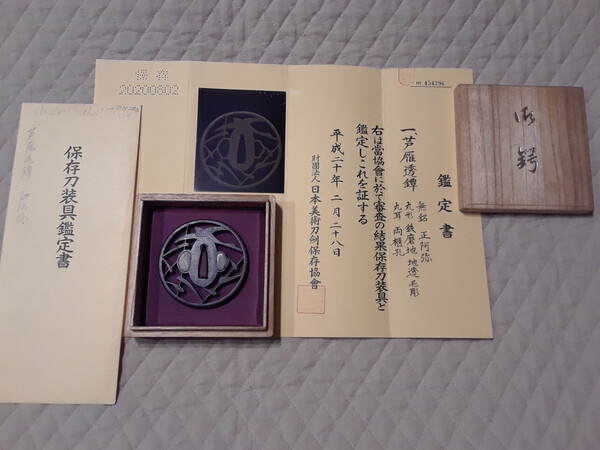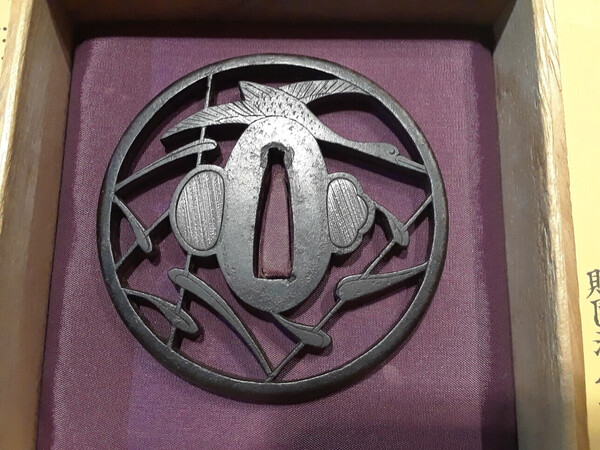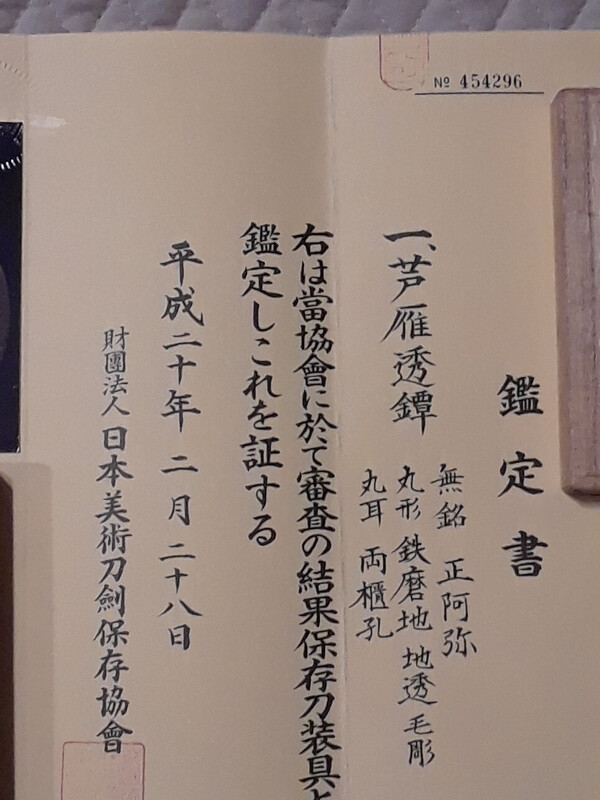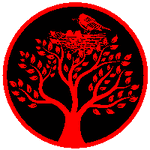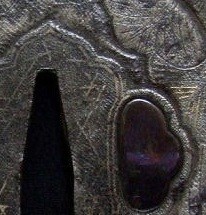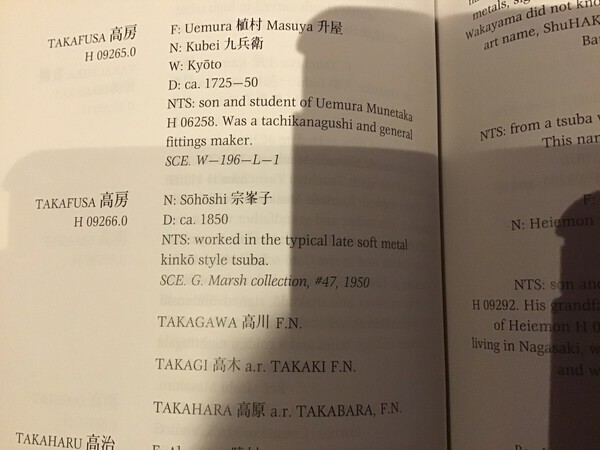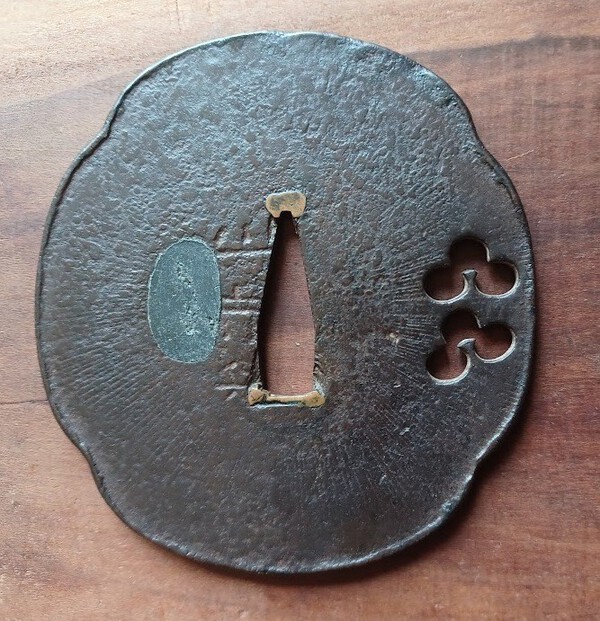Leaderboard
Popular Content
Showing content with the highest reputation on 10/02/2025 in all areas
-
An important and exceedingly rare Japanese efu tachi made by Imperial Household Artisan Kanenori to commemorate the Ascension to the Throne of Emperor Taisho. This sword is dated August, 1912. Emperior Meiji passed away on July 29, 1912. Yoshihito, his son, ascended to the throne in August 1912. Emperor Yoshihito was later awarded the name Emperor Taisho, 123rd Emperor of Japan. Efu Coronation court tachi were made in very limited numbers–often just 12 were made. Another such example was returned by Russian President Vladimir Putin to Japan in 2016. It was presented to Japanese Prime Minister Shinzo Abe. That sword was made for the ascension to the throne of Emperor Hirohito (Showa). A quick google search will bring up an article about that sword. This sword is signed ‘Teishitsugigeiin Sugawara Kanenori’ (Imperial Court/Household Artisan). The reverse is dated ‘An auspicious day in August, First Year of Taisho Era’ (1912). The nakago is also marked ’83 Okinasaku’–which refers to Kanenori’s age of 83 at the time he made this sword. The koshirae is adorned with the Go-shichi no Kiri (5-7-5) Paulownia crest. The blade nagasa is 63.8 cm. This fine Coronation tachi comes with shirasaya as well. Each piece (tachi and shirasaya) comes in a silk sword bag. CONDITION: This important and exceedingly rare Coronation tachi is in quite perfect condition. This sword was well cared for. SOLD --Matthew Brice StCroixBlades.com6 points
-
For those of you who haven't noticed - Ito Mitsuru (well-known Japanese collector which you know for writing the 3 Higo books, Nobuie articles, book on Katanakake,...) has started a blog. This looks like it will be well worth the read. Blog3 points
-
There very much can be. I know it's said tanto didn't use kawagane and shingane, but there is no doubt that some tanto were made that way, and I have a late koto/early Shinto tanto showing shingtetsu after many polishes. I have zero doubt some smiths did make tanto the same way they made wakizashi and katana. We already had this debate way back: https://www.militaria.co.za/nmb/topic/49145-shintetsu-good-bad-or-acceptable/ http://www.ksky.ne.jp/~sumie99/shingane.html3 points
-
3 points
-
3 points
-
For decades I have Interpreted the gendai era as follows... Gendaito 1876-1945 - traditionally made as weapons. Shinsakuto 1953-present - traditionally made as ART.3 points
-
Wakizashi Attributed to Sōshū Masahiro, Ōei Era (NBTHK Hozon) Price: $4,500 + shipping This mumei wakizashi has been attributed by the NBTHK to Sōshū Masahiro and is accompanied by a current NBTHK Hozon kanteisho. The blade is from the Ōei period, a time during which the activity of the second and third generations of Masahiro overlapped. While both generations produced work under the same name, the characteristics of this blade align more closely with the nidai. The presence of a vibrant hitatsura with bright nie, ara-nie, tobiyaki, and muneyaki, along with an active jihada, suggests the hand of the second generation more so than the sandai, whose work tends to exhibit a quieter and less nie-laden surface. The blade measures 1 shaku 5 sun 8 bu and is in an older but intact polish, with a few minor stains. The hitatsura is highly expressive, featuring rich nie activity across the ha and ji. Ara-nie forms strong kinsuji and sunagashi in areas, with tobiyaki scattered across the monouchi and muneyaki continuing along the back. The boshi is deeply tempered with nie-kuzure. The jihada is itame with some small ware, and the blade shows possible evidence of historical use, including several kirikomi along the monouchi. The sugata is elegant and in the style of a kodachi. The form of the habaki suggests it was once fitted in a koshirae in the efu-tachi style. Masahiro is considered a direct descendant of Hiromitsu, who in turn transmitted the most technically advanced aspects of the Sōshū tradition after Masamune. Hiromitsu is credited with the perfection of hitatsura. Masahiro’s early work clearly reflects the techniques and aesthetic principles developed under Hiromitsu’s hand. An example of shodai Soshu Masahiro is listed below. https://nihonart.com/portfolio/shodai-soshu-masahiro-ko-wakizashi/ The nidai Masahiro worked through the Meitoku and into the early Ōei period. He is distinguished from the sandai by his liberal use of nie and a more active chōji-midare and gunome-midare structure. In contrast, the sandai’s blades are quieter, occasionally verging toward suguha-based interpretations with reduced nie. This blade, with its dynamic hataraki and exuberant use of nie-deki, is more consistent with the nidai’s approach. The overall construction and shaping of the nakago also supports an earlier attribution within the lineage. MASAHIRO (正広), 1st gen., Jōji (貞治, 1362-1368), Sagami – “Sōshū-jū Masahiro” (相州住正広), “Masahiro” (正広), “Sōshū-jū Masahiro saku” (相州住正広作), first name Kurōjirō (九郎二郎), student of the 1st gen. Sōshū Hiromitsu (広光), he worked in the style of his master whereas his hamon is somewhat smaller dimensioned as that of Hiromitsu, he also adds some togari elements, there are tachi, ko-wakizashi and tantō extant, chūjō-saku MASAHIRO (正広), 2nd gen., Meitoku (明徳, 1390-1394), Sagami – “Sōshū-jū Masahiro” (相州住正広), “Masahiro” (正広), suguha-chō mixed with slightly undulating notare, gunome, ashi, yō, sunagashi and small tobiyaki in nie-deki, higher gunome elements towards the bōshi area can be connected to the kaeri and muneyaki MASAHIRO (正広), 3rd gen., Ōei (応永, 1394-1428), Sagami – “Sagami no Kuni-jūnin Masahiro” (相模国住人 正広), “Sōshū-jū Masahiro” (相州住正広),, “Sōshū-jūnin Masahiro” (相州住人正広), only few blades are extant by him, the jiba is no longer noticeably nie-laden with his generation2 points
-
Here are tthree examples of what are to me 'classic non-dragon jakushi'. The work gives a similar vibe - however the seppadai does indeed look 'namban'. Meanwhile it is not unheard of to find namban tsuba that were given a beauty treatment with gold and precious metals. Anyway, the style is similar enought to make me wonder.2 points
-
Don't worry, Steve. They started bustin' my chops, too, when I had been doing this for a few years and wasn't learning the names. I use the JSI page on names: Swowa Seki Smiths - Japaneseswordindex.com and Brian's index on the Home page. Using both, I got this one! After a while, you'll start recognizing some of the most commonly used kanji like Kane 兼 and Kuni 国 For those I can't recognize or remember, I scroll though the JSI page until I spot one.2 points
-
https://www.ebay.co.uk/itm/177375089349 [why do they like to show the tsuba the wrong way up?] about W 47 mm x H 50 mm2 points
-
2 points
-
I had to look that one up! 瓢箪 = hyotan The Gourd Canteen See also the story "Tengu no Hyōtan 天狗の瓢箪 The Tengu's Gourd." A little homework assignment for those that just gotta know what I am talking about! Another indicator of an early souvenir blade is that the bottom of the tang is finished versus cutoff. And finally, thank you for the additional pictures Rebecca. We track these souvenir blades by the subassembly number. If you look carefully at the tang, you will see the following two characters have been painted over the older number. As you can see, the parts on your sword match this number. I zoomed in on one of your pictures and also saw 40 stamped on the crossguard. 四〇 = 40.2 points
-
Up for sale is a Type 95 NCO and a Type 32 both in original excellent condition TYPE 95 NCO £950 GBP TYPE 32 £650 GBP UK SALES AND DELIVERY ONLY Buyer to pay for shipping PLEASE READ IN DEPTH INFORMATION AND PHOTOS OF THE SWORDS You can also contact me at: dfxstudio@hotmail.com for a quicker response2 points
-
I cannot read the body of the letter either. The address and the name of the addressee are 市内目黒区向原町二五〇 – In Tokyo, Meguro-ku, Mukaiharamachi 250 山田耕三 殿 – Mr. Yamada Kozo2 points
-
Most of this is beyond my reading skills, but the characters in the leftmost column in the first and fourth images are a name: 山田耕三郎 (Yamada Kōzaburō, probably this guy).2 points
-
Hi Colin, thank you. Wow that is really lovely and very well done - there's a ton of work gone into that. I'll be interested to see who the maker is as it looks like you've snagged a good one there.2 points
-
2 points
-
1 point
-
This is a private letter penned by General Baron Shigeru Honjō who commanded the Kwantung army during the Mukden Incident and the invasion of Manchuria. After being arrested as a war criminal by SCAP in 1945, he committed seppuku before the trials began. I would greatly appreciate any even partial translations. Thank you.1 point
-
You had the chance to handle the blade in Berlin.1 point
-
Nanban or Hizen... not Jakushi (although there's a similar look to the nunome, Jakushi never did this tsuba shape or did this type of design theme). It's probably a Chinese craftsman working in one of the ports in Japan (therefore should get a hybrid combined attribution of both Nanban and Hizen... which never happens in the papering world, because they are fixated on sticking to the narrow set of categories that were agreed upon in the past. Both categories of Nanban and Hizen are loosely defined at best and have lots of issues... so the exact attribution under those two labels is kind of arbitrary anyway. Either way, it's an unusual tsuba so congrats on your first purchase.1 point
-
I was able to order thru the website - U.S. address - 8,800 yen for shipping - will have to wait and see for the tariff... ALso note they printed only 500 copies so expect this to be a hot item.1 point
-
Jake, My dream hobby in retirement would be to spend a couple of days each month in the BM or V&A in London examining soft metal tsuba with an XRF gun and collecting data on the composition. Of particular interest would be 'chocolate brown shakudo' tsuba, often sold by major auction houses and Japanese dealers, which I suspect are nigurome with little or no gold. John1 point
-
I'm still waiting (as usual) to find out if work will send me to SHOT this year. I really hope so, as I'd love to attend the sword show again. Let's hold thumbs.1 point
-
1 point
-
1 point
-
1 point
-
Not sure where this comes from Jean, but it says 残雪酷似 'looks very much like lingering, (unmelted, accumulated, remaining) snow'.1 point
-
Jay, it is a difficult task to judge a TSUBA from images alone, but as you have it in hand, you may be able to get a relevant assessment. If you imagine how the carving on TSUBA of this style are made, you will find that the tools used leave typical traces. In your case, the chisels (= TAGANE) used to cut the design of mountains and water (SANSUI) will leave a smooth surface in the lines. Now when you use a magnification glass you can judge by yourself if these grooves have a "sandy" surface (which would be a hint towards cast technique) or if they look cut by a sharp tool. As the TSUBA does not look 'old' from its general appearance, you could exclude corrosion/rust having caused a rough surface. All openings in a TSUBA can be reworked and smoothed-out after the production, so in case one does not find traces for cast technique there, this does not mean so much. But in my experience, the design cut with TAGANE is never reworked so looking carefully at how the TSUBA was actually made will teach you a lot about its origin and age. The small gold (or brass) embellishments can be applied on a cast TSUBA blank and are no evidence for a hand-forged TSUBA. THIS THREAD BELONGS IN THE TOSOGU SECTION!1 point
-
1 point
-
@Bruce Pennington mei can be read as Kuroda Saburo more like a copied real name, and yes date is Showa 13 (1938) October. Cutting is rather strange style.1 point
-
1 point
-
1 point
-
1 point
-
Steve, on the main page, there is a kanji assistance chart. Have a bit of a go, I am pretty sure you can get at least half of that, it's not a difficult one. Starts with province, last 2 are smith name. It's always worthwhile as you start to learn a few of them without even realizing.1 point
-
As to market price, $450 is what I got mine for, however it is rare to see one sold as a souvenir. Almost all sellers market them as Navy kaigunto. But I've always felt they should be priced higher, more like Brian said. Rebecca, I don't see how or where you would get an official appraisal for this. You are currently talking with the only guys that really know what this sword is. Like the other guys said, the market itself is the real appraiser. They are worth whatever people are willing to pay for them.1 point
-
I had the same idea once upon a time, then I checked the price tag of an actual XRF gun and awoke from my dream turned nightmare lol1 point
-
The era designations are just tools for kantei, in general swords looked like A in the Koto period and looked like B in the Shinto period. When you do Kantei there is only Koto and Shinto - if you bid on a Shinto smith for a Shinshinto maker they do not say "Wrong period". Of course we like to (need to) break it down further, most of the eras cited are political ones EG Nanbokucho and Muromachi while there are given dates for these periods swordsmiths did not change styles based on a specific date, rather they worked in the style of their teachers and perhaps followed trends seen in the capitals, only changing slowly and if you were out in the country you got the news much later. The time periods are generalizations to help you break down all the tremendous data on makers into digestible bites and think in terms of trends. A smith who was born prior to the Haitorei and who worked primarily in the Shinshinto period is a Shinto smith. Born before the Haitorei but working primarily in the modern era = Gendaito smith. There will always be smiths that overlap these dates, some who are trendsetters and some who only follow the trend later...1 point
-
Hi John, C14 dating would not be possible for dating iron TSUBA as it is a specific method for dating organic matter. In addition to that, the carbon content of TSUBA iron (in case you could isolate it) is especially low (just traces, if at all).1 point
-
Thanks for all the comments guys. Sorry for being so late in acknowledging them as I have been a bit busy with other things. Thanks Piers for pointing out that the NBTHK Hozon does state that it has a tsuchime-ji finish. My bad, I guess I am getting a bit lazy with my translations in my old age and missed those kanji and meant to translate them later. Good to hear that I am not the only one that thinks that the NBTHK shinsa is not perfect, I too have seen identical looking tsuba with different attributions. I just feel that these guys know more than me, so make fewer mistakes and I have so much to learn. I guess that mumei iron tsuba must be the hardest category to evaluate, especially as most of the artists are lost to history and were unrecorded. If only carbon-14 dating was cheap and readily available it would make dating easier, but then we would not want to drill samples out of our tsuba! Elemental analysis using XRF would also be a fascinating area for study to see if different schools had different amounts of trace elements in their iron. Sorry, its just the scientist in me getting carried away. Thanks again, John1 point
-
Its not often that I offer up things for sale since I prefer in-person. However, this is an exception as I need to move it on and fund some projects! I will be posting a few other things when I have the time. On offer is a lovely Shoami school tsuba, papered in 2023. It features a lovely crane in flight motif, with several feathers providing the necessary framing to make this a rather robust piece. It has added solid silver hitsu plugs; these were added after the papers. This tsuba has likely been mounted sometime in the past. The padded box is included and has the word "Shoami" on the lid which is a nice little added bonus. The pictures should explain all, but if you have additional questions, please feel free to ask. I am asking $1,000 USD for such a lovely piece. I am open to fair offers and will consider partial trade but must make the majority in cash as I have obligations to cover. Shipping will be free CONUS and elsewhere I will attempt to get you a quote if need be. Such a lovely tsuba with a desirable motif as this one should fetch $1200-1400 with the Hozon papers it has I believe; but as stated, I need to move it on and have obligations. So I pass on the savings to you all in hopes it makes for a quick sale for me! As always, first come, first served. ~Chris1 point
-
1 point
-
Many thanks for posting the extra images,nice silver foil wrapped habaki,the way the groove extends into the nakago is also a nice feature,the patina shows it is original,I have seen gendaito with bo-hi that looked as though they were recent additions for practitioners of iaido,usually in modern koshirae. I think you have a nice package,good length,bo-hi,family mon,the condition can be improved with a good soak in a light oil then prolonged wiping with crushed tissue or well folded and creased paper kitchen towel which should remove surface dirt. I don't think profit enters the equation if you have something that you can appreciate and enjoy.Over the course of 40+ years that I've been involved with this interest I have owned hundreds of swords,many of which I lost money on when I sold them but I never considered it a loss,rather a part of the learning curve that can't be found in books,so be happy! Regards, charles.1 point
-
Agree, a little on the large side at 9.0cm! Many thanks Steve, greatly appreciated Thanks John, I’d been watching it (and the monkey item) for a while on a gun dealers website (at huge prices) but then he put his whole collection into an auction and bingo! Both the above came from his dispersal at slightly more realistic prices! Personally I think the pine tree and moon item is utterly beautiful and in pristine condition. ….and here he is in Haynes THANKS GUYS!1 point
-
Aritsune 有恒 Another example below https://www.tsuruginoya.com/mn1_3/b00085.html1 point
-
1 point
-
1 point
-
1 point
-
I think, to some degree, I had that coming. I was ranting about the NBTHK too much, given my own disappointments. I'd previously considered the sukashi and questioned it, but reserved judgement until seeing it in hand. I've seen wider cuts in a lot of old pieces. The nakago ana, I felt was more recent filework from the inside. I see it a bit differently. One point against me is the kozuka ana and how wide it is spaced. I would have to consider if it were added later or original. If original, then I would have to reconsider if I was being a git trying to see it as a ko-tosho. I should put my NBTHK opinions away and try on focus on explaining what I see.1 point
-
Correct, 越 as in Echizen’ya-Tazaki Store. It has shown up before but without the enclosing circle. So this logo variation is a first appearance for me. 越前屋多崎商店 = Echizen’ya Tazaki Shōten. Cross-Reference Arsenal Stamps.1 point
This leaderboard is set to Johannesburg/GMT+02:00



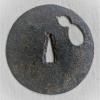
















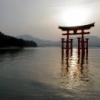

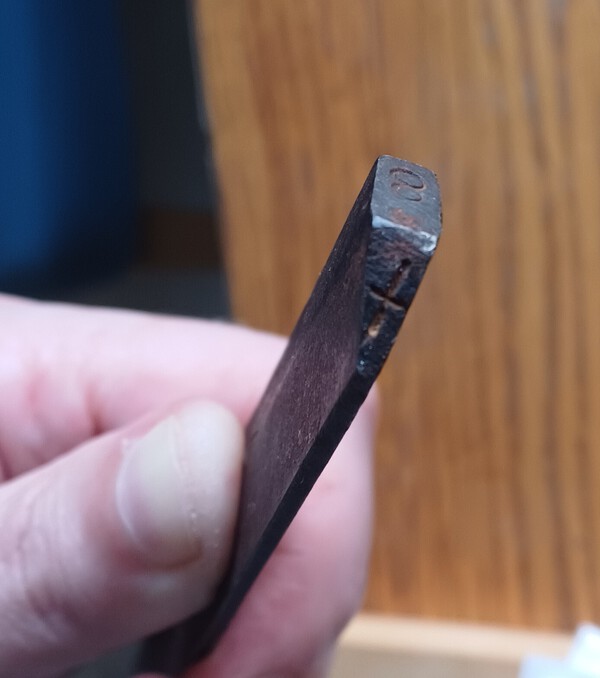
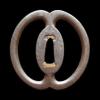

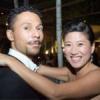
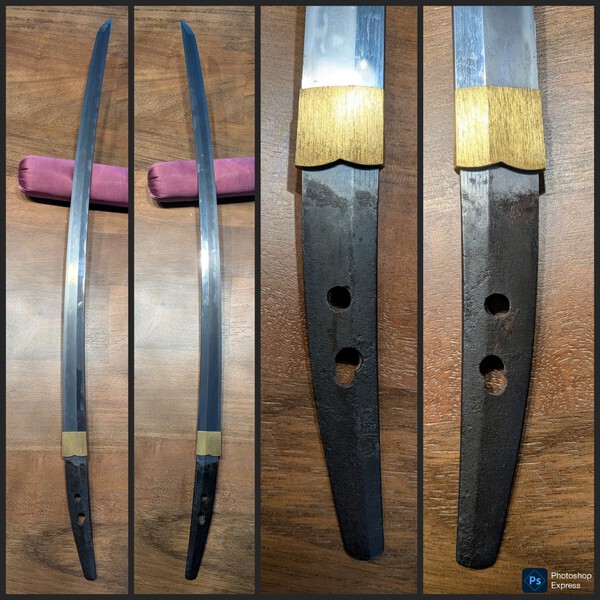

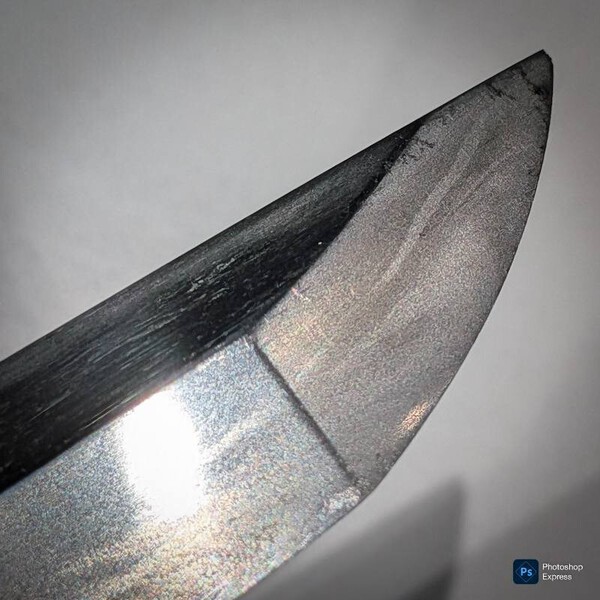



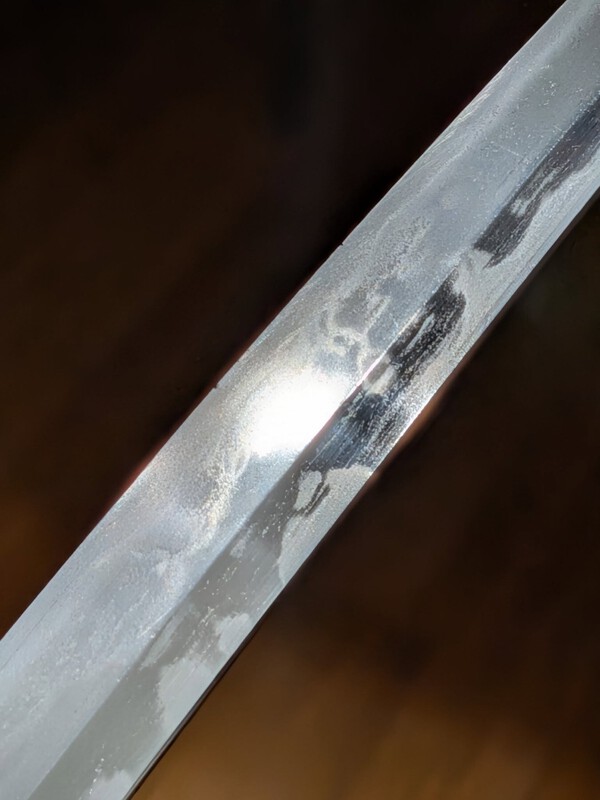


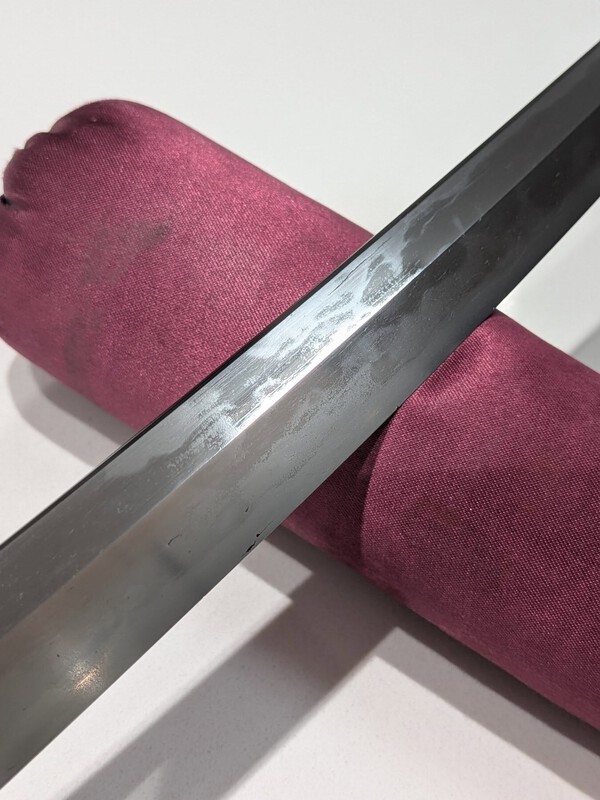
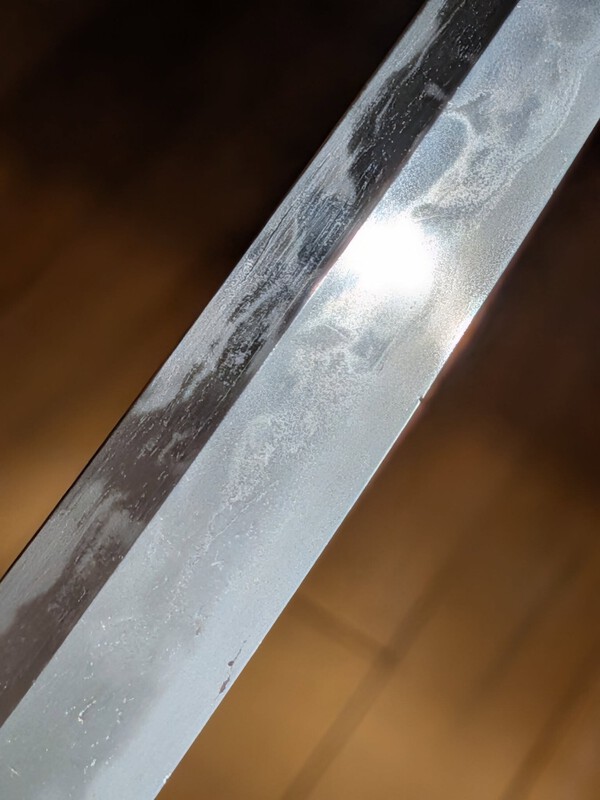




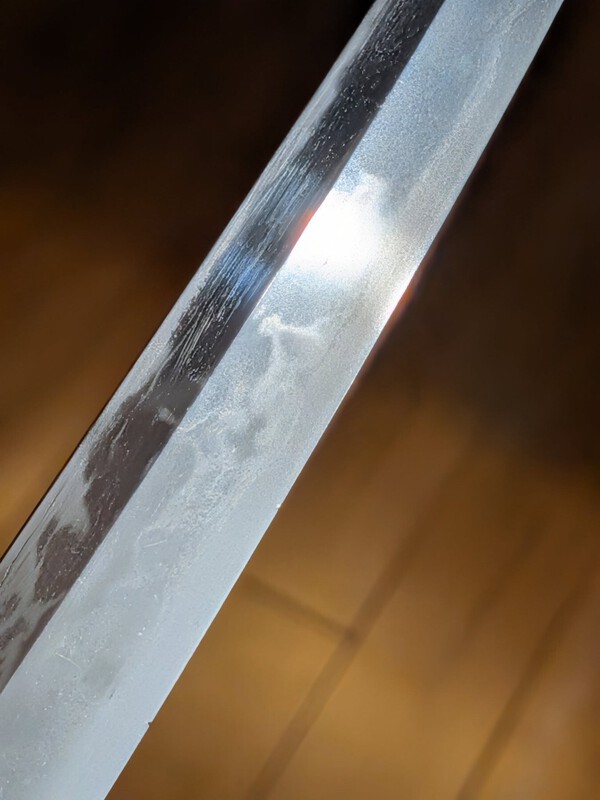















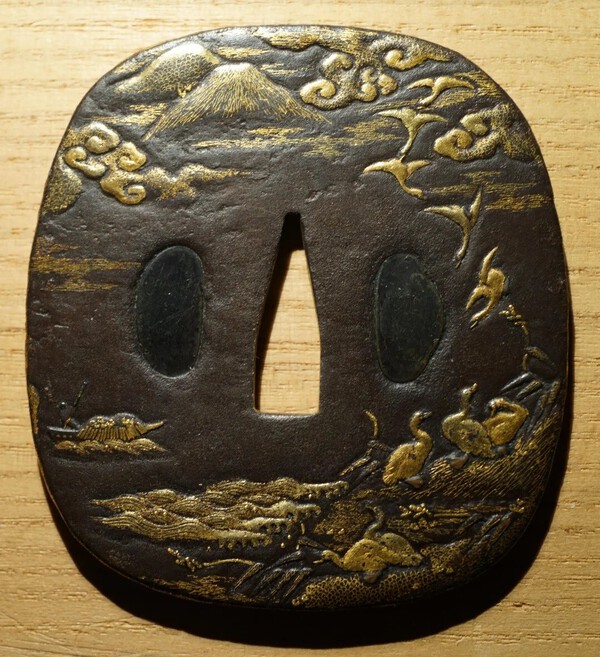
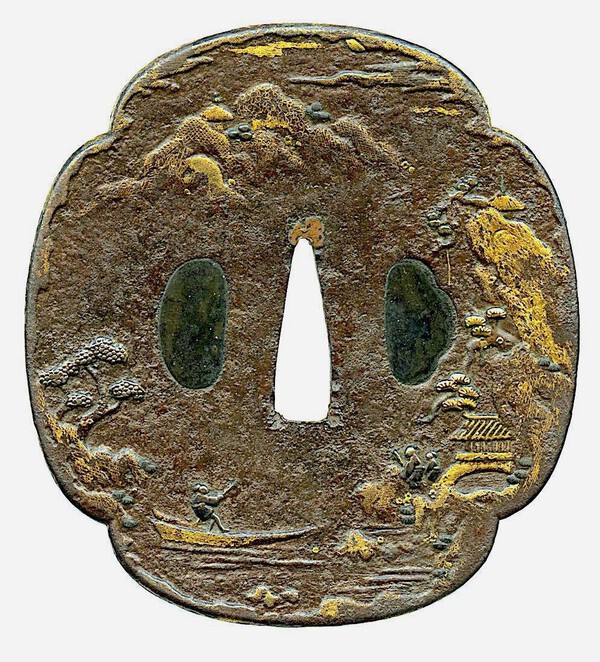
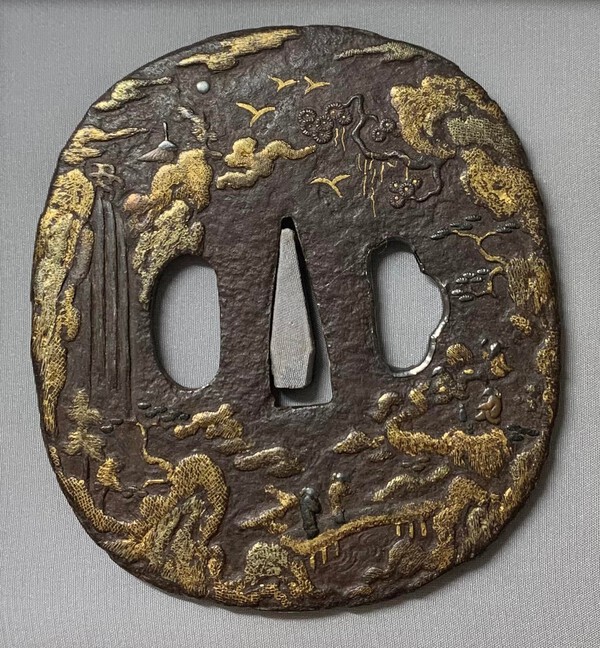

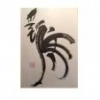

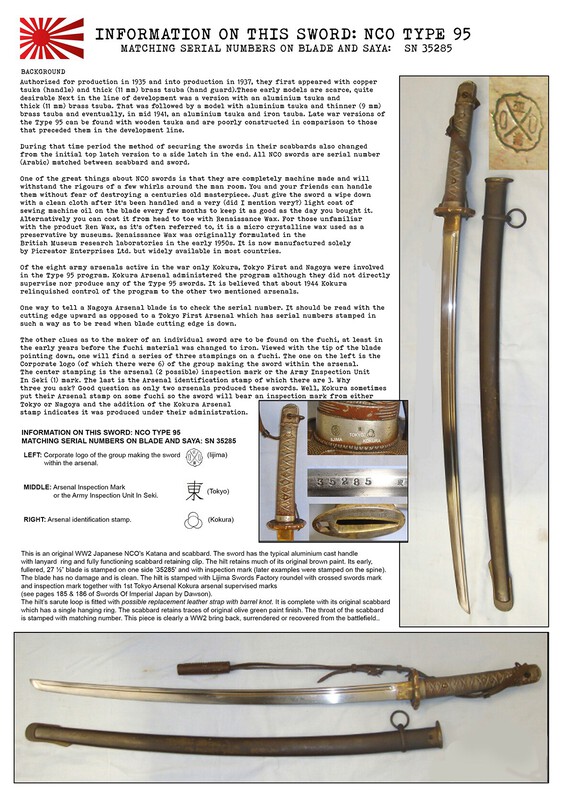
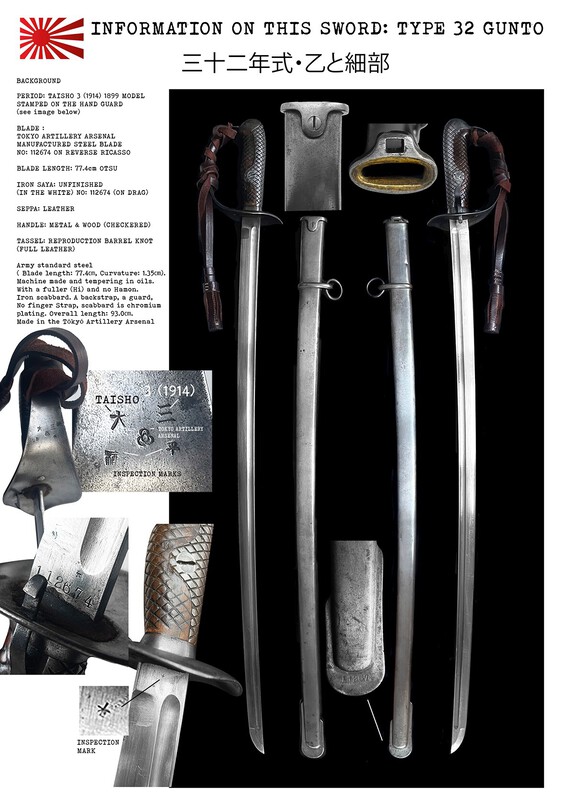
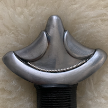
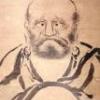


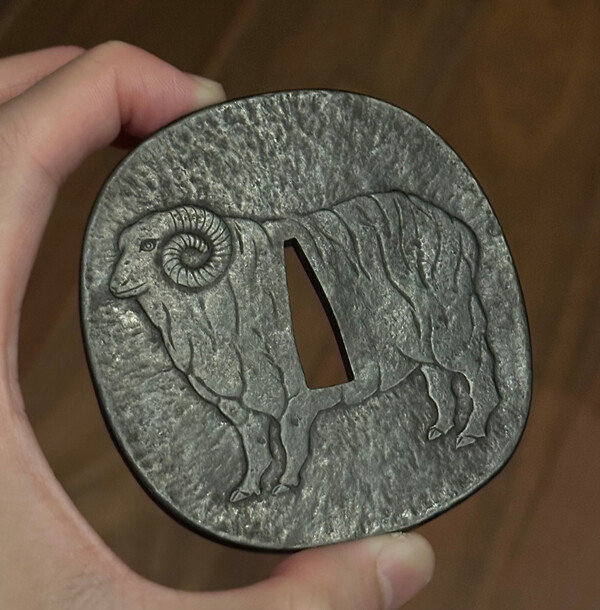








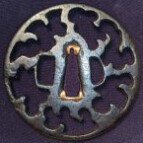
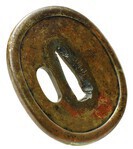
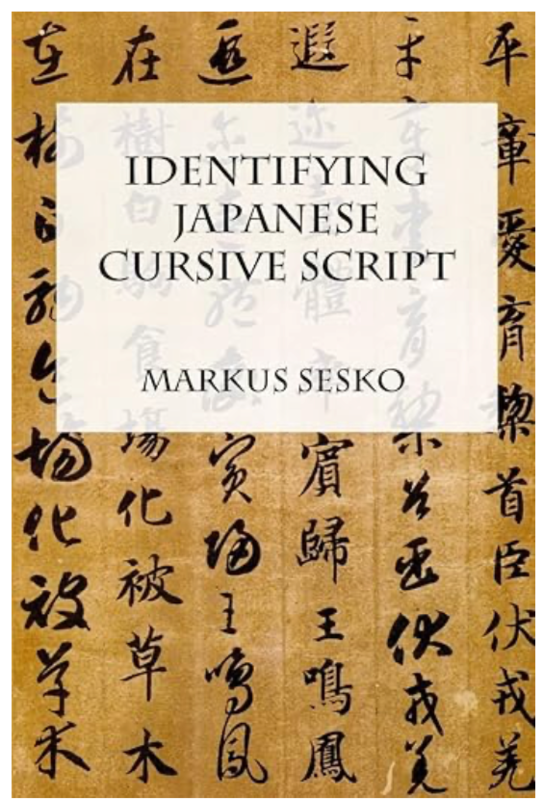
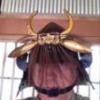
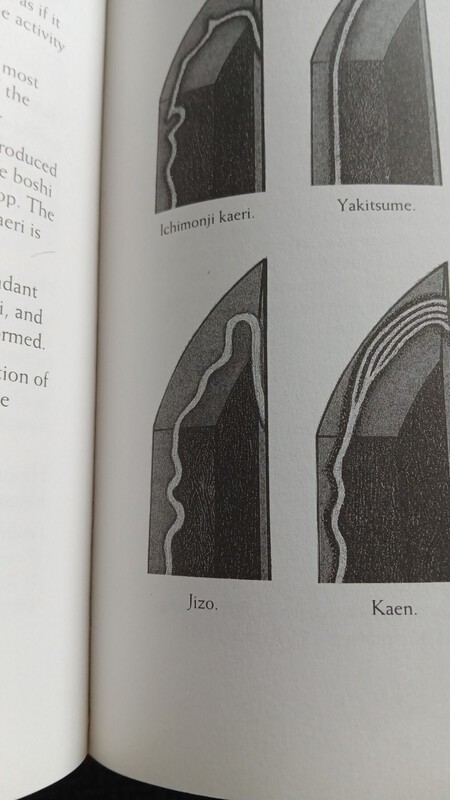

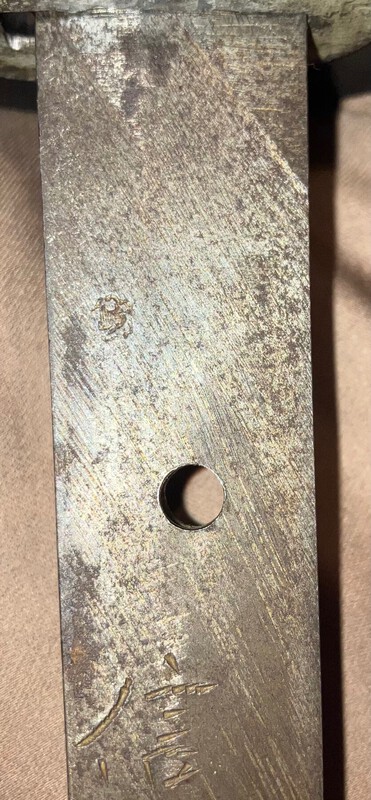
.thumb.png.4c5df79fec171b2dc4a23af38e280a4d.png)

